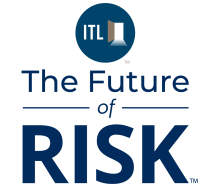As macro volatility, climate events and litigation risks continue to challenge pricing stability, insurers are responding with a sharper lens and rewarding the well-prepared.
This is the era of precision risk, where even two companies in the same sector can see drastically different renewal outcomes depending on how well they present, quantify and control their exposure. Rising capacity and heightened carrier competition — particularly in property and cyber — have started to temper rate increases, especially for insureds with robust risk management programs.
The commercial insurance landscape showed mixed signals in the first quarter of 2025. Rate guidance ranged from -20% to +15% across major lines, with results largely influenced by risk profile, loss history and industry classification. Certain lines — specifically cyber, workers' compensation and D&O — saw decreases. Others — notably commercial auto and umbrella liability — encountered capacity constraints and sharp price increases, particularly for higher-risk clients.
Consider cyber: Organizations with strong controls, documented internal processes and alignment between IT and risk teams are seeing more favorable renewals, with modest rate decreases of up to 10% and in some cases more substantial decreases (over 50%), depending on how the organization was presented to the marketplace in prior years. Underwriters are rewarding maturity, not just software. Companies that pair solid cyber hygiene with sophisticated modeling and vulnerability scoring have more options, like higher sublimits and broader terms.
Meanwhile, lines like commercial auto and umbrella and excess are less forgiving. First quarter rate increases in these segments typically ranged from +5% to +15%, with steeper spikes in high-risk sectors like transportation and construction. In these lines, a weak risk story — whether from outdated safety protocols or limited data — almost guarantees above-average increases.
Underwriters Want Answers, Not Just Applications
For the policyholder, the message is clear: Insurers expect more. Not more paperwork, but more insight. They're asking:
- How current are your property valuations?
- What business continuity plans back your business interruption limits?
- Can your safety programs be backed by outcomes, not just intentions?
- How are you addressing location-based CAT exposure or litigation risk?
Insurers are under pressure to improve underwriting performance, control loss ratios, and manage capacity. Years of continuing catastrophic weather losses — like this year's California wildfires, expected to result in as much as $50 billion in insured losses — have made profitability harder to maintain. Add to that social inflation, unpredictable litigation and widening gaps in coverage, and underwriters can't afford to treat all submissions equally.
They are triaging submissions more aggressively and rewarding those who come prepared with well-supported documentation, including safety protocols, updated valuations, business continuity and disaster recovery plans and clearly articulated risk mitigation efforts. This is particularly true in distressed or volatile sectors like transportation, real estate and healthcare, where the gap between well-managed and high-exposure accounts continues to widen.
The Well-Prepared Renewal Playbook
In a segmented market, what you do between renewal cycles matters as much as what happens during them. Risk leaders seeing the best outcomes in 2025 are doing the following:
- Start early. Starting the renewal process early creates the breathing room to shape a stronger outcome. It allows time to revisit property valuations, update exposure data, clarify loss narratives and address underwriter questions. Even 60 to 90 days earlier can make a meaningful difference in how your submission is received.
- Quantify the right data. Underwriters are applying stricter triage, prioritizing submissions backed by meaningful metrics, including CAT modeling, updated total insured values (TIVs), measurable risk control strategies backed by loss data, cyber risk scoring and business interruption calculations. Accounts with strong safety protocols, up-to-date valuations and clear mitigation stand out.
- Align across departments. The strongest risk presentations reflect input from across the business, including IT (for cyber), HR (for EPL and benefits-related exposures), finance (for valuation and liquidity) and operations (for safety programs and continuity planning). Businesses that bring cross-functional alignment to the table are showing insurers that they've done their homework and that their insurance strategy is backed by broader operational readiness.
- Be open to structural changes. Nuanced markets require flexible thinking. Structures like captives and parametric solutions are no longer reserved for massive enterprises. They're viable tools for managing cost, volatility, or coverage gaps, especially in CAT-exposed or litigation-prone lines.
- Set internal expectations. Even well-managed risks may face increases in high-pressure lines like commercial auto or excess liability. Historical data, market insights and program benchmarking can be used to explain why a change is happening to stakeholders, and how your strategy is mitigating its impact.
2025 Is a Test and a Turning Point
This year won't reward the default submission. It will reward organizations that demonstrate control, strategy, and responsiveness. C-suites and risk managers who treat insurance as a year-round process instead of a last-quarter task are finding themselves in stronger negotiating positions, with more stable programs.
The gap between well-managed and distressed risk is widening. It's no longer just about loss history. It's about how effectively the business tells its risk story, how well its internal systems support that narrative and how early it engages with the market.
Across every line of coverage, the first quarter of 2025 showed that organizations with accurate valuations, active mitigation efforts and a clear risk strategy are outperforming peers. As the year progresses, volatility will remain a constant. But for the well-prepared, so will opportunity. In this market, readiness is leverage.







